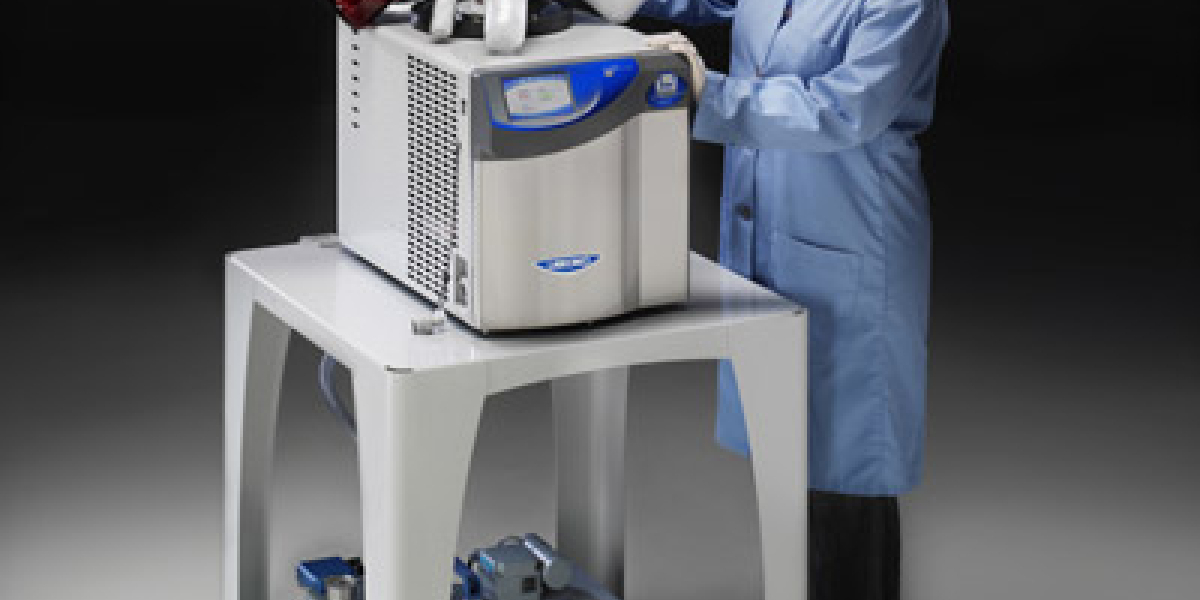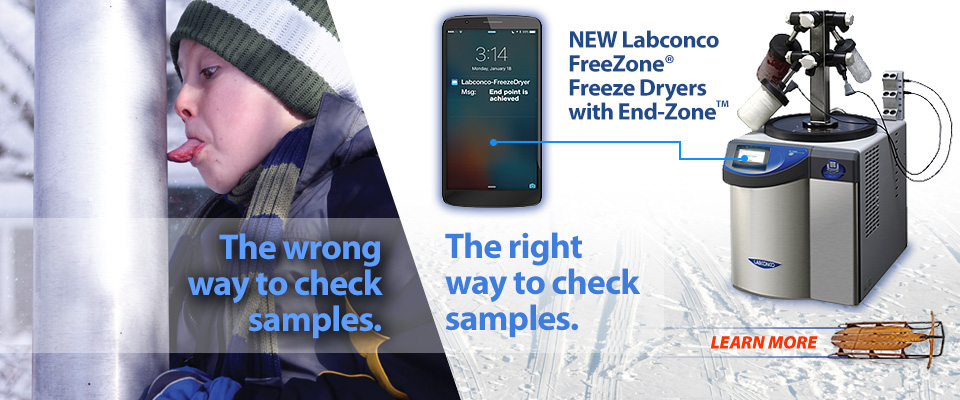Freeze drying using isopropyl alcohol

The use of IPA (Isopropyl Alcohol) in freeze drying applications are numerous, sometimes as an inexpensive precursor for manufacturing pharmaceuticals.
Other uses are for a disinfectant to destroy bacteria and fungi on equipment, a solvent to aid in chemical reactions, preservative to sustain a pharmaceutical, or, a coolant for samples with specific temperature requirements.¹
It can even be used as an extractant. IPA is polar, which makes it easy to extract other polar chemicals from plants or animals, as well as extracting liquids to create new pharmaceutical products. If a drug requires long term storage or shipment, then lyophilization, or freeze drying, is a great preservation method.
This process requires a temperature differential of no more than about about 15-20 degrees to prevent collapse and melt back of the sample. The freezing point (or eutectic temperature) of 100% IPA is -89°C, which is too low to safely freeze dry with a standard lyophilizer; however, diluting the IPA with water raises its eutectic point.
A -105°C FreeZone® Freeze Dryer can lyophilize samples that are extracted in IPA for long term storage.
Freeze Dry Process
The process of freeze drying requires three steps:
- Pre-freezing
- Primary Drying
- Secondary Drying
Having a sample completely pre-frozen is essential for a properly lyophilized sample. Because of its low freezing point, IPA may melt on the quick walk from the freezer to the freeze dryer. Using an insulated flask will help prevent this melt back. Labconco offers two sizes of insulated flasks depending on the volume of sample.
With the freeze dryer ready, add the samples one at a time, waiting for the vacuum to recover after each sample. Once the samples are added and a full vacuum is achieved, primary drying may begin. The primary drying step removes 92-93% of the moisture, and is the longest step in the freeze dry process.
When the samples look dry, you can move it into secondary drying by adding heat to the samples, removing the remaining 7-8% moisture. You can add heat to a flask by wrapping it in aluminum foil or other insulator. The secondary drying step takes approximately half the time required for primary drying.
Once the samples are completely dry, they are ready to be stored or shipped for use.
---------------------
¹Pharmaceutical Uses of Isopropyl Alcohol | eHow.com http://www.ehow.com/list_6105411_pharmaceutical-uses-isopropyl-alcohol.html#ixzz1O2U4VPAl
| chevron_left | Common mistakes when using a laboratory freeze dryer | Articles | How to select lab vacuum pumps for high vapor-flow applications | chevron_right |







